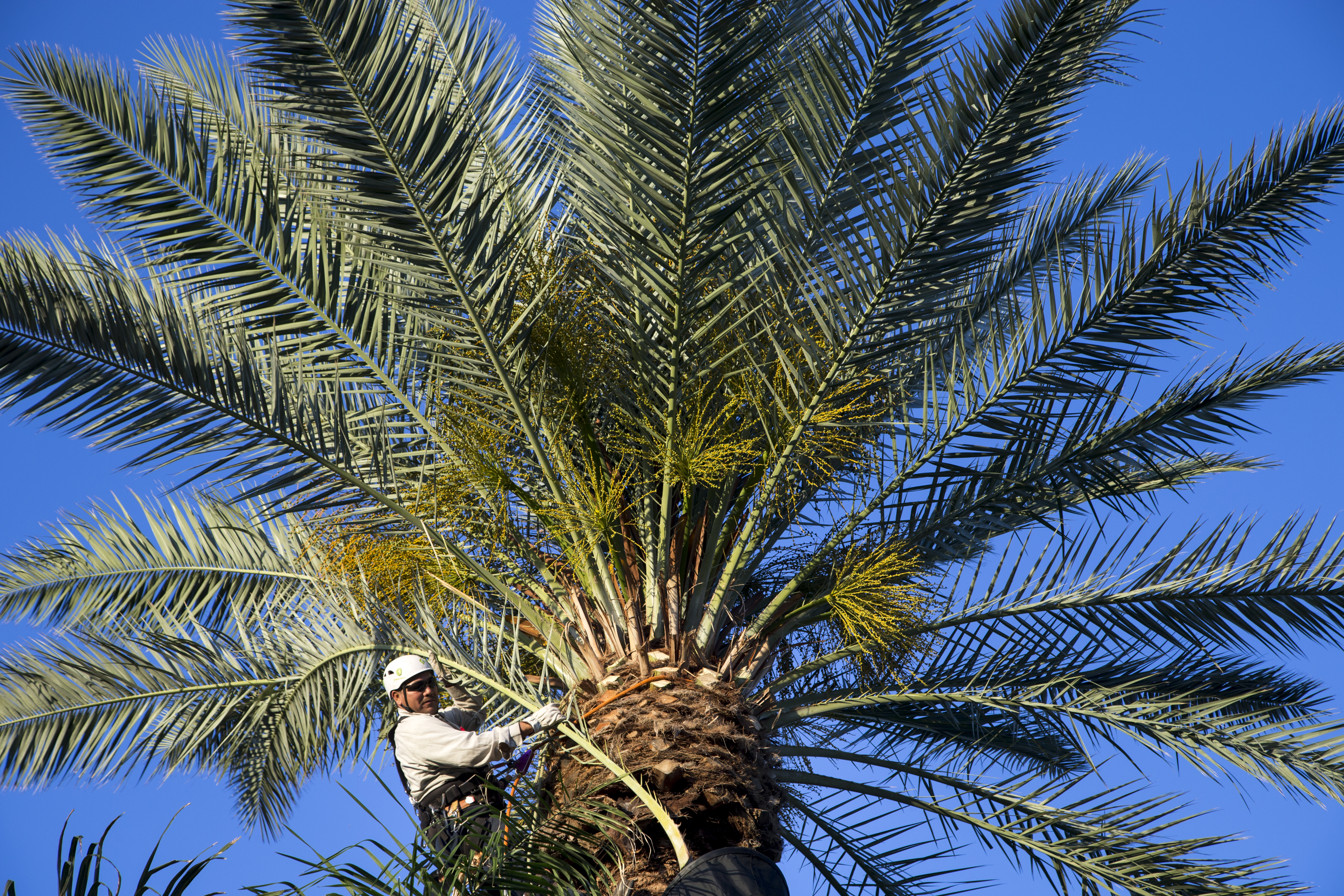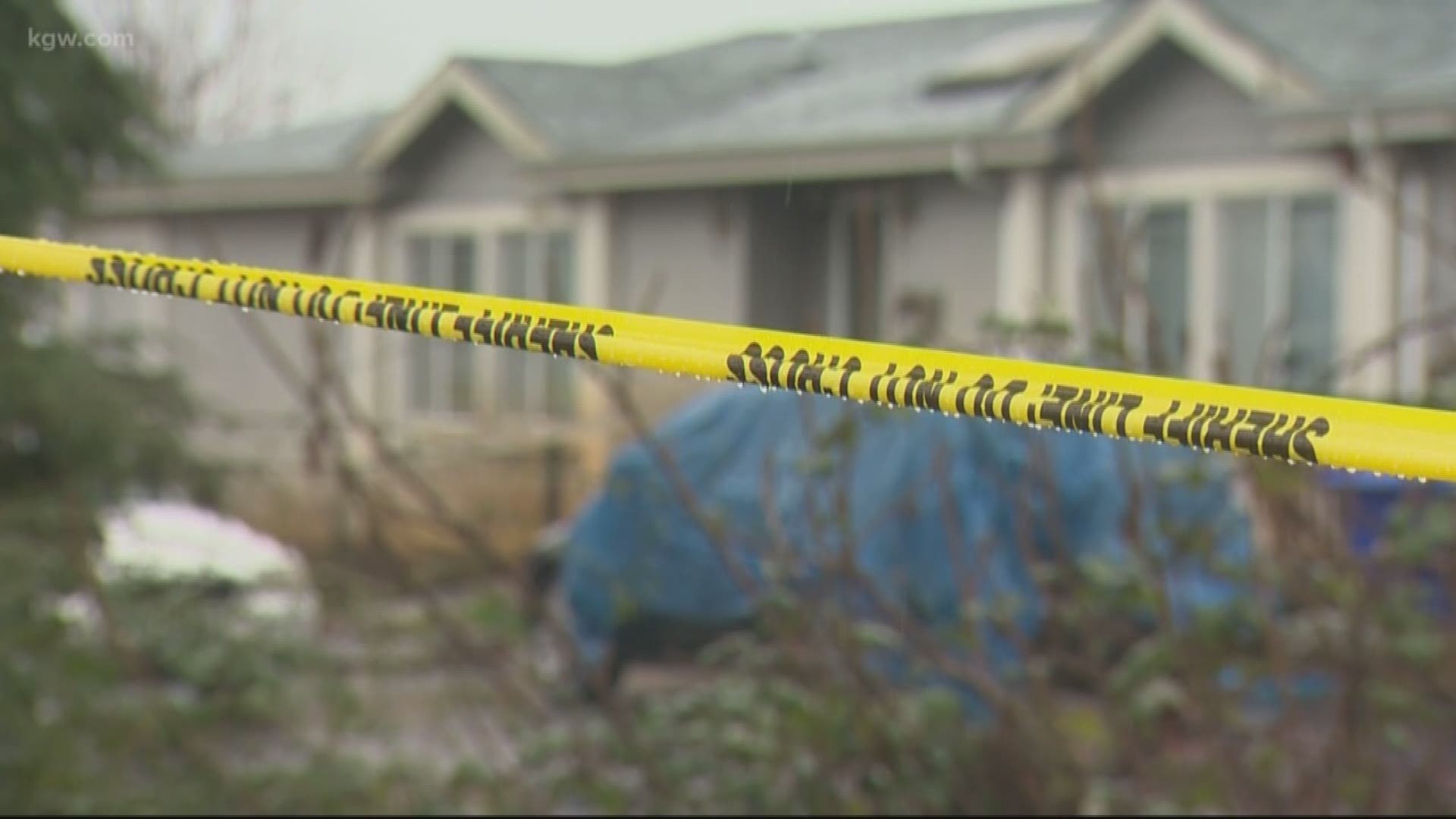![Phoenix seeks solutions to palm-frond waste [gallery : 84032086]](http://www.gannett-cdn.com/-mm-/2cf8b69748d395fc025588d5798d00417b39d4a9/c=1334-0-3528-1875/local/-/media/2016/05/06/Phoenix/Phoenix/635981444955677298-uscpcent02-6pkt7hos834ss0qwa7y-original.jpg)
![Palm fronds costing Phoenix [image : 84033172]](http://www.gannett-cdn.com/-mm-/491cc01f5598fc2ef04dc4a0990789bb0813a31b/c=127-0-2935-2400/local/-/media/2016/05/06/Phoenix/Phoenix/635981444957237318-uscpcent02-6pkt7wi73io19liida7y-original.jpg)
PHOENIX — From coastal enclaves to bone-dry deserts, landscapers around the world are stumped on how to recycle one pesky plant byproduct: palm fronds.
The coarse leaves of palm trees can take years to break down, making the plant difficult to compost. Many green-waste facilities won't accept the leaves because the wiry fibers get caught in machinery.
Instead, communities send the fronds to landfills.
Phoenix alone dumps roughly 34,000 tons of palm fronds from city streets into a landfill in Buckeye, costing over half a million dollars every year. The mass is equivalent to more than 4,500 African elephants.
![Cubs to replace commemorative bricks that turned up in Illinois landfill [oembed : 84112844] [oembed : 84112844]](/Portals/_default/Skins/PrestoLegacy/CommonCss/images/smartembed.png)
Minimizing palm-frond waste is part of the city’s Reimagine Phoenix sustainability initiative, which aims to turn trash into usable resources, and the city is seeking ideas.
“If you’re doing something cool with trash and recycling, we want to benefit from your expertise,” said Gretchen Wolfe, project manager for Phoenix’s Community and Economic Development Department.
Phoenix seeks solutions
A sustainable solution to palm-frond disposal could help increase trash diversion, as the troublesome leaves currently account for 3.4 percent of the 1 million tons of total trash accumulated each year, according to Yvette Roeder, spokeswoman for the Phoenix Public Works Department.
The Phoenix City Council’s goal is to increase trash diversion to 40 percent by 2020. From 2013 to 2015, the city’s trash diversion had grown from 16 percent to 20 percent.
![Palm fronds costing Phoenix [image : 84033176]](http://www.gannett-cdn.com/-mm-/f5e161d347d5b0e42d775b0f89f2822c64f03902/c=1106-0-3497-2043/local/-/media/2016/05/06/Phoenix/Phoenix/635981444953025264-uscpcent02-6pkt80fn3ip8scpda7y-original.jpg)
Earlier this year, the city solicited ideas from businesses for a local solution to palm-frond disposal that doesn't attempt to compost the material. The selected business will lease land at the Resource Innovation Campus, a zone created in a partnership with Arizona State University.
Two companies submitted proposals: Palm Silage Inc. and Prema LLC. The final proposals will be presented to the Phoenix City Council for approval in late June, according to Roeder. Details of the proposals were not immediately available.
At $17 per ton to transport, Wolfe hopes to lessen the hefty bill. The city wants to promote local economic activity and considered only proposals that would have operations in Phoenix.
“We want them to do this right here in Phoenix,” Wolfe said.
Why palm fronds don't compost
The fibrous nature of palm fronds slows the biodegrading process significantly, according to Mark Fleming, curator of botany for the Arizona-Sonora Desert Museum.
The fronds turn into small, wiry strands as they break down. Green-waste facilities often refuse palm fronds because the strands can get tangled in shredding equipment, causing damage to machinery and halting recycling production for repairs.
Fleming said moisture is key to composting palm fronds.
![Palm Trees [image : 82106974]](http://www.gannett-cdn.com/-mm-/f3113d751e8c7dabd6ed3ca05a88cb24dd26c70f/c=0-464-2097-2256/local/-/media/2016/03/22/Phoenix/Phoenix/635942090385008828-palm-trees.jpg)
Palm fronds can take up to 50 years to decompose on their own. But combining the fronds with moisture and other plant material that decomposes more quickly would speed up the process, Fleming said. For example, he suggests combining shredded palm fronds with manure, or feeding the shredded fronds to pigs and goats.
Other Valley cities struggle with palm-frond disposal. Mariano Reyes, marketing communications specialist for Mesa’s Environmental Management and Sustainability Department, said residents know to toss the leaves in the black trash bins, bypassing the blue recycling bins.
“For right now, they aren’t something that can blend with the composting process,” Reyes said. “We’re always looking for new options.”
Phoenix’s Wolfe said finding a way to re-purpose palm fronds could lighten the landfill load from cities across the state.
“If we found a viable way to divert those palm fronds," it would be repeatable other places, she said.
The Slice-N-Grind
On the other side of the Valley, a team of Gilbert teens also is attempting to untangle the problem of palm-frond decomposition.
The Gilbert Gearheads, a robotics team made up of 14-year-old Andrew Lott, 15-year-old Isiah Lucero, 14-year-old Tyler Gregersen and 13-year-old Michael DeGeer, sought a viable solution to minimize global waste in the Trash Trek Challenge, a program hosted by the FIRST Lego League.
The four home-schooled boys considered researching trash solutions for batteries and latex paint, but discovered that palm fronds not only create a significant amount of waste in the Valley, but also around the world.
The boys ran into the same issue as the city of Phoenix: What will decompose a plant that won't break down? "We’re just left with this huge trash problem that nobody knows what to do with," said Kevin Lott, Andrew's dad and head coach of the Gilbert Gearheads. "We had no idea that if you can process it, you can create all of these cool solutions."
“They (palm fronds) are like hair in a vacuum,” Andrew Lott said.
They attempted to grind the leaves with a hand crank, but found the process laborious with little mulch created. They also attempted to burn the leaves, which produced minimal success.
![Palm Trees of Arizona [gallery : 82136012]](http://www.gannett-cdn.com/-mm-/6badb2de31ca5003443fc2e214d5704701018e6b/c=0-48-1081-972/local/-/media/2016/03/22/Phoenix/Phoenix/635942637099677145-Mexican-fan-palms.jpg)
So the team designed a machine called the Slice-N-Grind to break down the palm fronds into mulch, which they say can be used in industries like construction and farming. The machine is a two-step process: It cuts the fronds, then grinds the smaller pieces into mulch.
“If we could mulch the palm fronds, it becomes this miracle mulch that can do everything,” Lucero said.
The boys designed three machine models: a personal chipper for homeowners, a larger machine for landscapers and an even bigger machine for green-waste facilities. Members of the team broke down palm fronds from their own backyards and began experimenting with frond-infused products, even creating a brick reinforced by mulched fronds.
"We thought there were only going to be a few things that we could learn about from palm fronds at first," Gregersen said of the yearlong research efforts. "There’s a lot more than we thought.”
International trash challenge
The team won the 2015 Trash Trek Challenge with the design, beating out more than 300 other Arizona groups. In late April, they presented their findings at the FIRST Lego League’s World Festival Competition in St. Louis.
Along with their presentation on palm fronds, the boys competed in the robotics portion of the international competition. The team programmed a robot to complete trash-related challenges and finished 35th out of 105 teams.
Although all the teams presented trash solutions at the convention, the Gilbert Gearheads were one of two groups interviewed by the FIRST Lego League officials about their research.
“I was pretty overwhelmed by the interest in our team and our project," said Patty Gregersen, Tyler's mom. "People were very impressed."
The team hopes to continue its research by building a prototype of the Slice-N-Grind.


